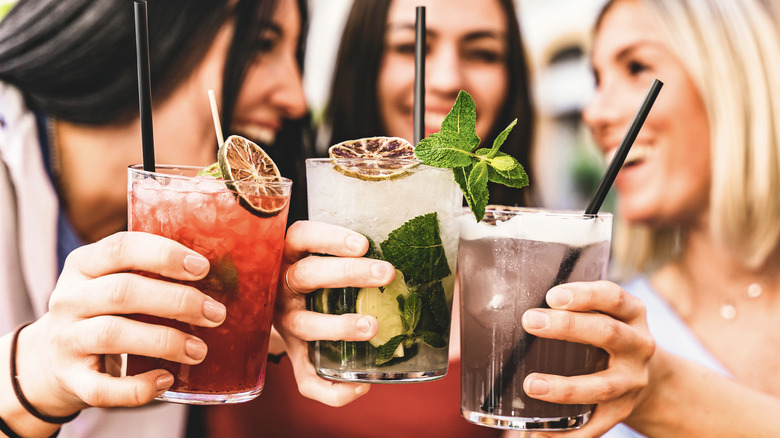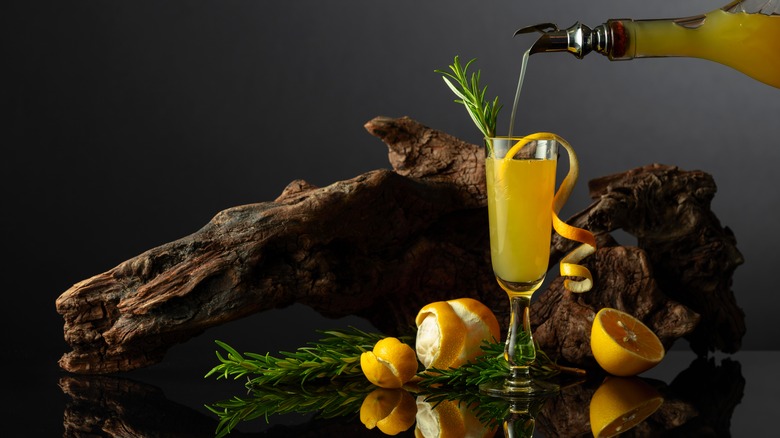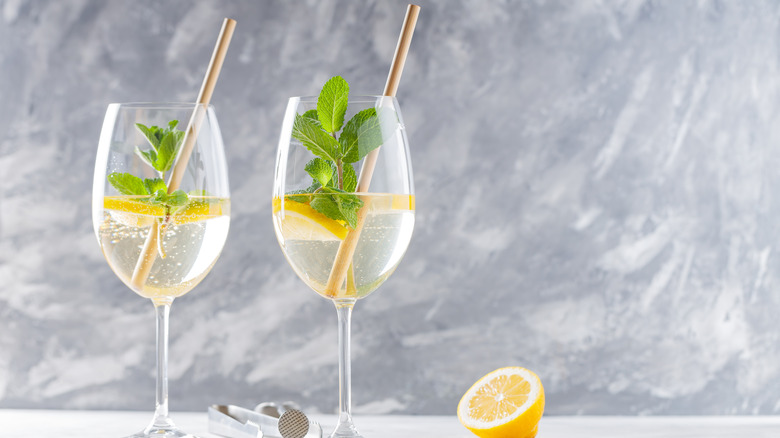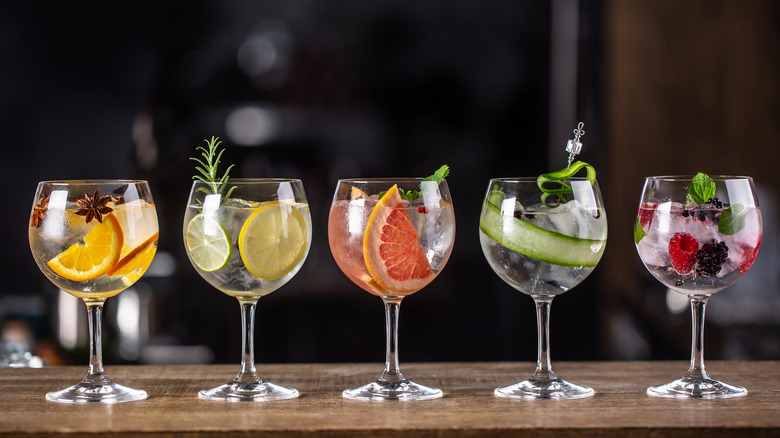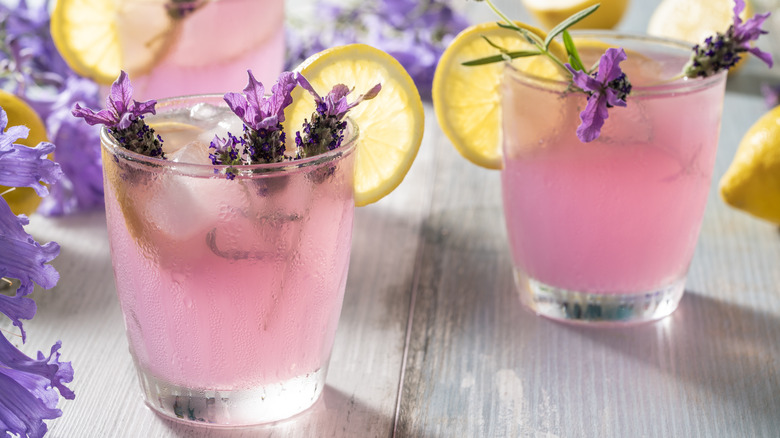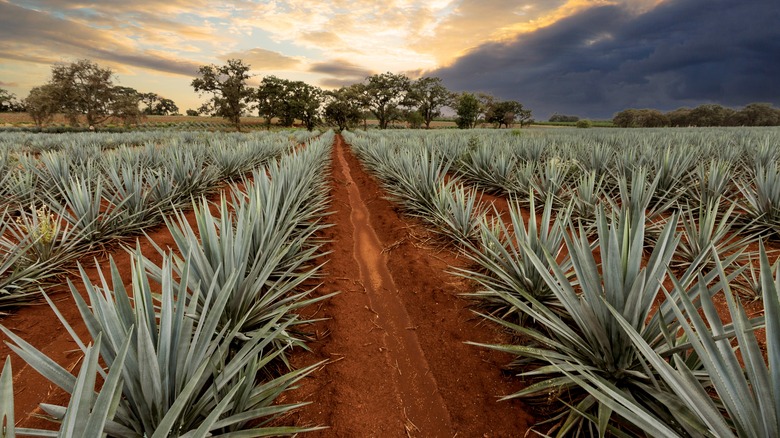These Are The 6 Summer Cocktail Trends To Look Out For, According To Spirits Experts
Cocktail drinking is a year-round sport. However, with each season comes new and exciting trends that pop up on bar menus and in liquor stores, and we as dedicated athletes must be aware. As we move into the warm weather months and swap out the hot toddies of winter to the spritzes of summer, so too come new and noteworthy trends, from floral flavors and fruity liqueurs to bumps of caviar alongside your martini. This summer promises to be a season of exciting and thought-provoking cocktail trends that should not be missed.
I spoke with three experts in the field of spirits and cocktails: Simon Ford of Ford's Gin, H Ehrmann of Fresh Victor, and Tyson Buhler of Death & Co., to get their insight on the cocktail trends to look for this summer. Luckily, these are trends that extend beyond the bar. Many of these new trends and products can be taken advantage of right in your own home, taking your home bar from slightly impressive to absolutely remarkable. As you prepare to stock your home bar for the summer season or find yourself frequenting more outdoor cocktail bars to indulge in a refreshing spritz or two, be on the lookout for these trends. Isn't it fun to be in the know?
Deep flavor due to complex liqueurs
The word "liqueur" leads most people to think of sweet and syrupy. When overused, liqueur can turn an enjoyable drink into a sugar bomb, but when used properly, a liqueur can be a crucial part of any beverage, alcoholic or not. With the right flavor and mix of ingredients, a liqueur can add deep, complex flavor to a cocktail, taking it to a whole new level. So it's no surprise that as cocktail trends develop for the summer season, liqueurs are along for the ride.
"Whether it's Chambord, Aperol, St. Germain, or any other fruity infusion, these liqueurs add a touch of sweetness and fruitiness that epitomizes the essence of the season," said Simon Ford. Be on the lookout for the names and flavors you may already recognize, like the ones Ford mentions, as well as new seasonal additions, like rhubarb, mango, and fig. Additionally, having a more herbaceous liqueur in your lineup can add depth to your after-dinner cocktails. As you build up your home bar, be sure to add a selection of liqueurs to the lineup, as they will prove to be crucial flavor enhancers.
The best way to incorporate a liqueur into a cocktail is to let it work in the background, enhancing the other ingredients without being too heavy. A Rusty Nail, which combines Scotch and Drambuie, a whisky liqueur, is a great example of this, emphasizing the Scotch whisky flavors even further while also rounding it out with sweetness.
Spritzes that go beyond Aperol
Is there anything quite as refreshing on a hot, sweaty summer day than an Aperol spritz? It's cold and crisp and also low in alcohol, making this a light, refreshing summertime beverage that you can treat yourself to over and over again. That said, the spritz is somewhat of a blank canvas: A liqueur or aperitif of your choice, Prosecco, and soda water come together in an ice-filled glass and finished with a garnish of your choosing. However, while the Aperol version is undoubtedly a classic, there are ways to expand. This summer, as you scan summer cocktail menus and look to make your own at home, note the expansion of the spritz.
For a spritz with less bitter flavor, there's the Hugo spritz. Made with St. Germain Elderflower liqueur, Prosecco, lime, and soda water, the Hugo Spritz is light and fresh with just a touch of floral sweetness. Garnish with a lemon slice and fresh mint. To accentuate the citrusy flavors of summer, a Le Moné spritz combines Le Moné Meyer lemon aperitif and Prosecco with a lemon twist and green grape for garnish, for a quick and delicious spritz with plenty of bright, lemony flavor. The Negroni sbagliato, a twist on the classic Negroni, combines slightly bitter Campari with sweet vermouth, and replaces gin with Prosecco for something light and sweet with just the right amount of bubbles.
Cocktails made with top-tier mixers
Perhaps a multi-ingredient, shaken and stirred, heavily garnished cocktail just isn't your speed in the summertime. A cocktail doesn't need to be complicated — some of the best cocktails contain nothing more than a distilled spirit and a non-alcoholic mixer, like fruit juice or ginger beer. A mixer is there to add another flavor element as well as a textural one, and, for H Ehrmann, it is this focus on flavor and texture that is taking the mixer to a higher level, and a more impressive one, too. Fresh, quality ingredients are ultimately what bartenders are looking for when seeking out mixers to keep behind the bar, and it's this focus on quality and consistency that is making mixers an important part of this summer's cocktail landscape.
From Fresh Victor, new options like Strawberry & Lemon and Grapefruit & Sea Salt add fresh, crisp flavors to margaritas, daiquiris, and the always classic gin and tonic. From Badger Bevs, sparkling grapefruit and sparkling blood orange mixers add tart, floral notes to make something as classic as the Paloma a more high-end drinking experience. For the home mixologist, Bittermilk's premium mixer collection focuses on whiskey-based cocktails, offering a concentrated mix of a bitter agent, an acid, and a sweetener to take the guesswork out of home mixology entirely; all you need is the whiskey to mix up an impressive tipple.
Inventive cocktail garnishes
A twist of lemon. A brandied cherry. A plump olive. These are just a few of the traditional garnishes that are commonly seen in some favorite drinks, whether they are classic cocktails or signature mixes. And while they will always hold a special place in the cocktail zeitgeist both as decoration as well as an additional flavor and texture element, technology and creativity have taken over, making room for more exciting, unique garnishes that go far beyond citrus and pickles.
As a gin expert, Simon Ford sees a lot of cocktails in his day-to-day life. And, as such, he has seen how the garnish has transformed, going from olives and lemon twists to garnishes that are far more inventive. Step into just about any specialty craft cocktail bar, notes Ford, and you'll come across any number of intriguing garnishes, such as concentrated extracts, liquid nitrogen theatrics, and boba pearls. At Temple Bar, a martini-focused bar in the Soho neighborhood of Manhattan, a "bump" of caviar can be added to any cocktail for an extra $20, adding a fresh, briny note to the liquor in the glass.
Starbucks is also leaning into the garnish game by way of coffee and tea beverages. In its new line of Summer Refreshers, Starbucks adds tart and fruity flavor pearls to add a burst of fresh raspberry flavor in each summer sip, as well as a textural contrast that makes these drinks tasty and playful.
Layering floral flavors
"I've been playing with tea in cocktails for well over a decade now," says H Ehrmann, "I was using it as a tool to help sell vodka... and I never really stopped." While tea cocktails have been around for quite some time, as Ehrmann notes, the interest in them has sparked far more recently, as bartenders and home cocktail drinkers discover the power of layering floral flavors into their boozy creations. Ehrmann uses chamomile with bourbon, Fresh Victor lemon sour mix, and egg white for a delightful twist on a whiskey sour. By infusing a neutral spirit or a simple syrup with floral flavors like lavender or rose, there's an added layer of delicate, vegetal flavor with just a little bitterness, as well as a wonderful aroma. Plus, as we move deeper into the warm weather season, there are more fresh flowers to use for garnish.
Lavender in particular is a floral flavor that has taken the drink world by storm, both in alcoholic and non-alcoholic ways. At BarDough in the Hell's Kitchen neighborhood of Manhattan, the Shea's Lavender Lemonade combines vodka, limoncello, lavender syrup, and lime juice for a light, fruity cocktail with that added sweetness from the lavender syrup, adding a complex layer of flavor to an inherently simple cocktail. In the coffee world, lavender has become the focal point of many an espresso menu, giving the traditional latte a more exciting and decadent flavor profile.
Mexican-produced spirits that aren't tequila
Spirits like tequila and mezcal may be what you think of first when considering spirits made in Mexico, but they aren't the only ones. Bacanora, an agave-based spirit made in Sonora, is made in a similar way to mezcal, but only uses a specific type of agave from the region, angustifolia, making this a local delicacy. Raicilla, an agave-based spirit hailing from Jalisco, uses a variety of wild and cultivated agave plants, resulting in a more floral flavor than that of tequila, and without the smokiness typically found in mezcal. For Tyson Buhler, it is the access to these spirits as they become more available in the U.S. market that is encouraging more experimentation and fun behind the bar this summer and into the future.
In a Pineapple Mint Smash cocktail, Kilinga Bacanora is mixed with lime, simple syrup, and pineapple juice for a tropical twist on the classic whiskey smash. Estancia Raicilla, with its subtle vegetal and herbaceous notes, can be enjoyed neat, or as a swap for gin in a Negroni. The versatility of these spirits is what makes them so attractive to mixologists and why they have come to pop up more on cocktail menus, as the unique flavor profiles become attractive ingredients for fun and inventive drinks.
